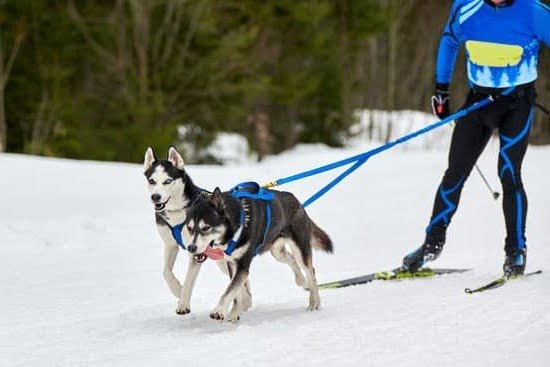Introduction
Deaf dogs are a wonderful and unique companion for families and individuals. Being deaf, however, can make some training more challenging than those of a hearing dog. This is why investing in specialized training classes designed specifically for deaf dogs is so important.
Deaf dog training classes provide customized instruction to help owners gain the knowledge, skills, and tools to best communicate with their deaf canine companion. Through these classes, owners will also learn how to effectively teach obedience commands using hand signals or vibration collars instead of verbal ones. Furthermore, hearing-impaired pups benefit from specific sound-related socialization activities that teach them how to interact appropriately with people and other animals despite their inability to hear.
Finally, deaf dog training classes focus on the prevention of common behavior problems inherent to deafness such as low response rates to cues or erratic responses due to overcompensation and fear. That way owners can be rest assured they are providing their furry friend a secure and confident home environment that takes into account all of its special needs.
Benefits of Training a Deaf Dog
Deaf dog training classes are a great way for owners of deaf dogs to help their pets become well-trained and safe companion animals. Aside from the obvious benefit of having your deaf dog become better behaved, there are also many other important advantages to be gained from regular training sessions.
First, teaching basic obedience commands can help ensure that your deaf pup won’t try to escape by running off because they will know how to come when called. Additionally, deaf dogs may need more structure and caution around other animals or people due to the lack of hearing. Obedience training provides special commands and hand signals that can help guide dog behavior even in the absence of sound cues.
Training is also essential for keeping your pup safe day-to-day as it enables you to give them specific instructions on what not to do. For example, a “stay” command with appropriate hand signals will allow a deaf dog to stay out of harm’s way when exploring an unfamiliar area or crossing streets safely without being distracted by loud noises or frightening situations. Additionally, offering positive reinforcement through food rewards during training sessions helps build trust between you and your pup while simultaneously reinforcing good behaviors and teaching new ones.
Overall, training classes for deaf dogs should not be overlooked as a valuable part of owning a canine companion — not only do they provide safety measures and strengthen the human-dog bond, but they also just make life easier and more enjoyable for everyone involved!
Safety Considerations for Deaf Dogs
When training a deaf dog, there are certain safety considerations to keep in mind. Notably, it is important to note that because these dogs cannot hear you, they can’t pick up on subtle verbal cues like other dog breeds. This means the primary way of communicating with them has to be through hand signals, facial expressions, and tactile cues such as patting or rubbing. Additionally, since a deaf dog won’t respond to hearing commands, they may become easily distracted. Cordoning off an area for perform training exercises is therefore recommended in order to avoid distraction and ensure focus. Since some physical corrections used in obidence training can startle a deaf dog unexpectedly and cause fear or aggression, it’s also important to rely on positive reinforcement methods of training such as rewards. Finally, heightened attention must be given to the environment around a deaf dog at all times. Dogs may not be able to hear cars coming down the road or other potential dangers that could lead to accidents if not watched out for carefully.
Training Techniques for Deaf Dogs
Deaf dog training classes aim to teach specialized techniques for communicating with and teaching a deaf dog. These classes can be extremely beneficial for owners of deaf dogs, as with appropriate training, deaf dogs are just as capable of learning new tricks as any other pet. Depending on the type of class, techniques covered include hand signals, visual cues (such as waving a light or pointing), tactile cues (such as taps on the shoulder), and positive reinforcement with treats. Other tips for successful communication and behavior modification may also be discussed in these classes. Ultimately, the goal is to give owners of deaf dogs the skills and knowledge necessary to provide a fulfilling home life for their pets.
How to Find the Right Deaf Dog Trainer
Finding the right deaf dog trainer for you and your pup is imperative. When selecting a deaf dog trainer, it’s important to consider their experience in working with animals that can’t hear. Do your research on potential trainers to ensure they have adequate experience and expertise working with hearing-impaired pets, as well as other dogs. Ask them questions about their past experiences regarding training methods, successes, and anything else you’d like to know more about.
Also take into consideration what type of learning style the trainer uses when training deaf dogs. Experienced trainers will be able to help you learn how to communicate with your pup in ways that are best geared towards those who cannot hear. This could include methods such as hand signals, visual cues, or even text messages that can be read through vibration sensors embedded into the skin of your pet. It’s important for you and your pup to feel comfortable within this new system so be sure to ask all the questions necessary before committing to a particular program or trainer.
Additionally, evaluate what kind of resources each potential trainer has access too in order to improve communication between yourself and your pet. For instance, do they have technology like wearable sensors that can detect pressure from a collar or harness when brushing them up against something or touch? Are there special toys available that light up when touched? Knowing these things in advance can help make sure you both get the most out of any training session and maximize success for both you and your beloved pet!
Tips for Effective Deaf Dog Training
1. Educate Yourself: Learn about the unique ways that a deaf dog communicates and how to read their body language in order to respond effectively. Get familiar with how the deafness will affect their behavior and be aware of any special challenges that you may encounter when working with them.
2. Use Visual Signals: Deaf dogs cannot use verbal commands, so you’ll have to get creative when training them. Implement consistent visual cues such as hand motions or light signals to replace vocal commands they wouldn’t otherwise understand.
3. Be Patient: Deaf dogs are capable of learning just like any other pup, but it may take longer for them to pick up on new cues since they don’t have verbal feedback when learning new tricks. Give yourself enough time to correct any mistakes and reward positive behaviors before moving on to something tougher. It can take longer in the beginning, but if you continue to build upon recent successes, your pup will be able to learn anything!
4. Keep Up with Socialization: It’s important for deaf dogs to socialize just like any other pet would, so make sure that you provide as many opportunities for interaction as possible for your pup. They should still be going on walks, visiting the dog park, meeting new people and animals regularly and having regular playdates with friends who can keep teaching them new things too!
5. Stay Consistent: All good trainers recognize the importance of consistency in training; this is especially true for deaf dogs whose visual recognition is key in understanding their owner’s command signals. Make sure you always use the same sign phrases or hand motions each time you cue your pup – it won’t take long before they start understanding what they mean!
Going Beyond Training Classes
Deaf dog training classes are a critical part of the journey in creating a positive home environment for your pup. Training classes help build trust and understanding between all members of the family, including your pup. The goal of these classes is to give owners the tools they need to better train and understand their deaf pup’s behavior and body language. In addition to teaching basic obedience commands such as sit/stay, recall, and walk on leash, classes often cover topics such as nutrition and safety specific to deaf dogs. Developing an Open Line of Communication: Deaf dog owners can also benefit from developing an open line of communication with other deaf dog owners. Sharing stories about success and struggles creates a support group that can be invaluable throughout the training process. Additionally, connecting through blogs and online communities can provide personalized advice in specific problem areas that might arise with your own pup. Setting Up Your Home: Taking into account your pup’s auditory differences from other hearing dogs is also important in setting up their home environment safely. This means being aware not only of items located around their living space but also different external factors like visitors entering the house or loud noises outside (like fireworks). Furthermore, it may be beneficial to create a vocabulary with them by way of visual signs to ensure a successful exchange between you and your pup!
Concluding Thoughts on Deaf Dog Training Classes
Deaf dog training classes, though more specialized than the average training class, are a great way to ensure a smooth transition into life with a deaf pup. With the right guidance and instruction, both pup and owner can develop a bond of trust through communication.
The success of any deaf dog training class depends largely on the instructions that are given by the trainer. The language used needs to be clear and consistent in order for it to be effective. It is essential that owners remain patient and consistent when using sign language to communicate with their pup – repetition is key! Whether through visual hand signs or creative cues with light or vibration, there are many different tools available to help teach deaf pups basic commands.
It’s also important for owners to have realistic expectations about the process – building up your pup’s confidence may take some time but commitment and patience will help you reach your desired goals when it comes to behavioral training. Positive reinforcement methods such as treats or play should be utilized whenever your pup succeeds in following a command so they can understand that they are being rewarded for good behavior.
In conclusion, once you get used to new methods of communication with your deaf pup, you can look forward to building a positive relationship based on trust and respect. With dedication from both sides, ownership of a canine friend doesn’t stop at hearing pups – deaf dogs make wonderful companions too!

Welcome to the blog! I am a professional dog trainer and have been working with dogs for many years. In this blog, I will be discussing various topics related to dog training, including tips, tricks, and advice. I hope you find this information helpful and informative. Thanks for reading!





